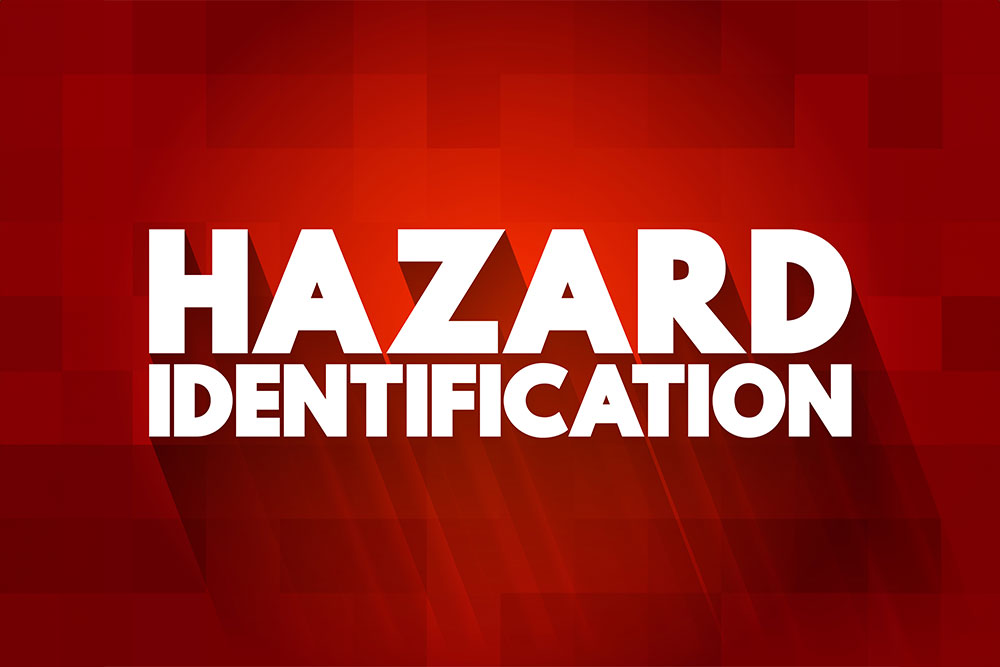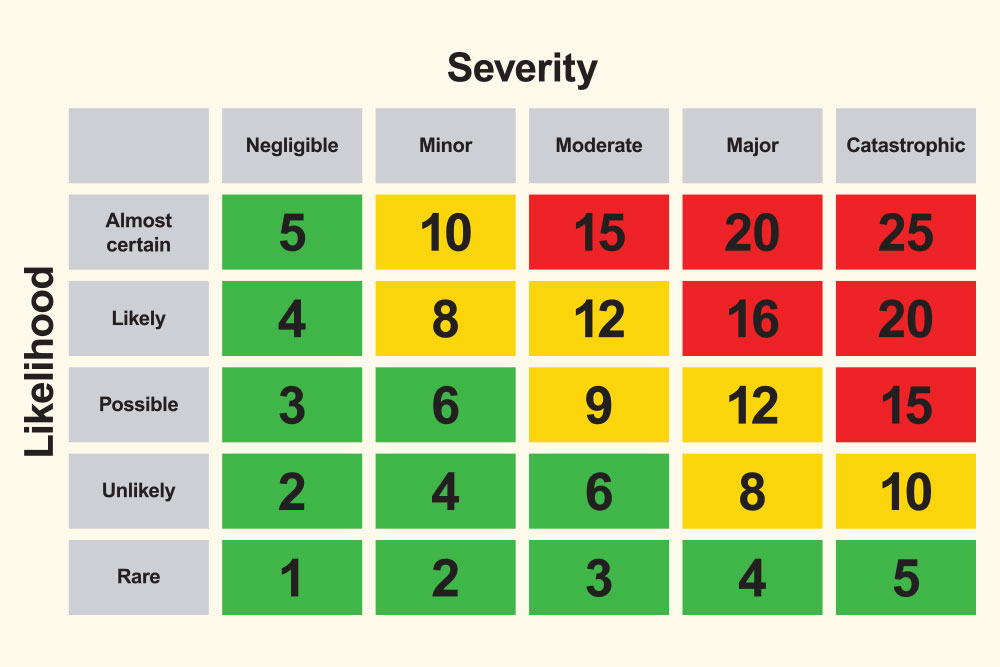
Risk assessments are essential for any workplace. But despite their importance, they’re often overlooked.
Think of a spare tyre in the boot of your car. It doesn’t mean anything unless you get a puncture.
Some people think the same about risk assessments in the workplace. They don’t think much of them as long as accidents don’t happen.
This is a fundamental misunderstanding of risk assessments and what they do. A good risk assessment is what prevents accidents from happening in the first place. And they’re as essential to your organisation’s long-term success as a business plan or budget sheet.
Read our guide to learn more about the importance of risk assessments, when they’re needed and how to conduct them.
What Exactly is a Risk Assessment?
A risk assessment is nothing more than a careful analysis of anything in the workplace that can cause harm. It’s a systematic approach to spotting hazards, working out the risk rating and taking steps to control those risks and prevent workplace accidents.
Completing a risk assessment covers the minimum an employer must do to keep staff safe. These essential duties are outlined in the Management of Health and Safety at Work Regulations 1999, which demand that employers must:
- Identify the hazards that could cause harm in the workplace
- Decide the risk level by considering how likely it is the hazard will harm someone and how serious that harm will be
- Act to eliminate or control the risk
As you’ve probably noticed, those three requirements match the risk assessment framework.
Risk vs Hazard
It’s important to note the difference between ‘hazard’ and ‘risk’ as sometimes, the terms are misused interchangeably.
A hazard is something that could cause harm. Risk is an estimation of the likelihood and severity of harm that could be caused by a hazard.
Think of a ladder being used in a workplace. That ladder represents a hazard because someone working from it could fall and injure themselves. But to work out the risk level, you need to consider:
- The worker using the ladder – are they experienced and have they set it up correctly?
- The environment the ladder is in – is the floor even and the surface it’s leaned against stable?
- The condition of the ladder – is it well maintained and suitable for the work?
- The size of the ladder (or really, the height from which the person using it could fall) – this would determine the severity of any harm that might happen
So, estimating the risk level of a hazard takes a little bit of working out. You need to consider the hazard, how it’s used, who comes into contact with it and the environment it’s in.
Because the same hazard might create a different level of risk depending on its location. For example, a kettle in an office used exclusively by adults is a pretty low-risk hazard. Put that same kettle in the middle of a classroom full of five-year-olds and the risk escalates. This rise in the risk level is due to the increased likelihood of an accident (young children wouldn’t necessarily know how to behave safely around a kettle) and the increased severity of the harm any accident could cause (children are more vulnerable).
Why are Workplace Risk Assessments Essential?
The obvious answer is that risk assessments are a legal requirement. But compliance isn’t the only reason you should put sufficient time and effort into any workplace risk assessments you’re obligated to conduct.
A comprehensive risk assessment protects employees (and anyone else on your premises) from preventable harm. And there is a clear moral argument for protecting your staff. People can and do suffer life-changing or fatal injuries at work. The Health and Safety Executive (HSE), which enforces safety legislation, recently released figures on workplace fatalities for 2022/23. Tragically, 135 people died because of work-related accidents in the previous 12 months.
And employees or their loved ones are not the only parties hurt by workplace accidents. Any organisation that fails in its health and safety duties is bound to suffer reputational harm and consequences such as reduced business or increased scrutiny.
Employers who have not put sufficient effort into risk assessments or health and safety arrangements also face severe financial and legal penalties. The HSE takes risk assessments seriously and looks to make examples of those organisations that fail to protect their staff adequately.
For example, the HSE issued Network Rail a fine of £1.2 million after long-term employee Kevin Mauger was killed when conducting maintenance work. The HSE investigation into the death found that Network Rail had failed to conduct an adequate risk assessment for the type of maintenance work Kevin was completing.
Does Every Business Need a Risk Assessment?
There is no such thing as a completely risk-free environment. So, no matter the size or sector of your business, you need to conduct a risk assessment of your work environment.
However, if your business employs fewer than five people, there’s no legal requirement to record your risk assessment. But you still need to ensure you’ve assessed the risks and implemented measures to control them.
From 1 October 2023, all businesses must complete a fire safety risk assessment, regardless of size, and all the findings must be recorded.
Risk assessments must be recorded and completed for every workplace hazard for larger organisations. This requirement means employers in high-risk industries, such as construction, often need multiple specialist risk assessments.

Who is Responsible for Conducting Risk Assessments?
The responsibility to conduct a risk assessment always falls on the employer. Any employer can delegate the actual risk assessment procedure to another competent individual, however.
Sometimes, the employer should trust someone else to complete the risk assessment. Identifying hazards, estimating risk and implementing appropriate control measures takes training, experience and skill, which some employers lack. As with everything health and safety, if you’re unsure you have the competency to complete the risk assessment yourself, find someone who can.
But remember, accountability always stays with the employer, so if you do end up delegating your risk assessment duties to an unfit person, you are still liable should something go wrong.
Do You Need Training to Conduct a Risk Assessment?
The legislation states competency is critical for those conducting a risk assessment.
Competency is defined by the HSE as:
“The combination of training, skills, experience and knowledge that a person has and their ability to apply them to perform a task safely.”
This definition makes competency a little tricky to pin down. Training will sometimes give someone the necessary skills and knowledge to achieve competency. It depends on the complexity of the task. For most low-risk work environments, the competent person completing the risk assessment shouldn’t need extensive training.
But despite the loose definition, competency is still a legal requirement. As an employer, you must be sure you have sufficient abilities to complete any risk assessments you undertake, or you must be sure any person you delegate risk assessments to is up to the task.
How do You Conduct a Risk Assessment?
Every type of risk assessment follows the same systematic approach to hazard identification, risk estimation and elimination or control.

There are five steps to follow for any risk assessment. These are:
- Identify the potential hazards – examine the work environment you’re assessing and look for the hazards that might cause harm
- Work out the severity and likelihood of any harm happening – this is the risk level
- Implement control measures – first, try and eliminate any risks entirely; any that can’t be eliminated must be controlled somehow
- Record your findings – document the hazards, who might be harmed and what you’re doing to minimise the risk of harm (remember, this isn’t a requirement if you employ fewer than five people)
- Review your risk assessment – you need to check that your risk controls are working
You can find more detailed guidance on the risk assessment process here.
Do You Need to Repeat Risk Assessments?
If operations, staff or premises change, so do risk levels. And whenever risk levels change, you must re-assess your control measures and check they’re still sufficient.
As a general rule, you should review your risk assessment and control measures when there are changes to:
- Operations or processes
- Staff
- Premises
- Equipment or substances used
You should also remain vigilant for any hazards that might have been missed on the initial assessment. If you or your employees notice hazards that have been overlooked or feel control measures aren’t adequate, you should review your arrangements.
Near misses or accidents at work should also prompt an urgent review of control measures.
The HSE provides risk assessment templates suitable for most low-risk workplaces. They also offer examples of completed risk assessments to help guide you through the process.
Our team has also written extensively about the different risk assessments your organisation might need to complete.
Are there Any Resources Available to Help?
If you’re still a little unsure about the risk assessment process, however, it might be best to seek out training. Your risk assessment will be critical in protecting your staff and ensuring your business complies with health and safety legislation, so it’s essential to get it right.
We offer a range of online risk assessment training courses that cover the most common risk assessments you need. You can learn the essentials of risk assessment to prepare you or your employees to conduct your assessments confidently. We also have specialist courses for more experienced safety professionals who need additional training for specific types of risk assessment.
Whatever course you need, you’ll have peace of mind knowing that your risk assessment has covered you, your staff and your business.






















































































































































































































































































































































































































































































































































































































































































































































